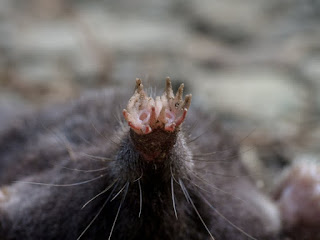HUNTS MOUNTAIN, SHERBURNE
Donald A. Windsor
Hunts
Mountain is that big hill southeast of the Village of Sherburne, the
one with the tall tower topped with a flashing light. Its pinnacle
is 1880 feet elevation. The Village elevation is 1055 feet. (1).
Hunts Mountain was the highest point in the Town of Sherburne, until
1853, when Sherburne annexed the area around Skinner Hill from the
Town of New Berlin (2). Skinner Hill has an elevation of 1960 feet
(1). So, now Hunts is second to Skinner.
The
pinnacle was marked by the United State Geological Survey in 1942 and
is quite visible. It has three ancillary markers with arrows in
their medallions pointing to the pinnacle marker. Two are quite
visible but the third is overgrown by vegetation. Photo below is by
Maryann Weiss.
This
hill is all privately owned, but we Bullthistle Hikers were fortunate
that one of the landowners, Allen “Al” Marsters, led us on a
vigorous hike on Sunday morning 11 September 2016. He took us up,
down, and all around, showing us some interesting sights and
explaining their backstories. We covered about 5 miles.
Hunts
Mountain was named after an early settler, Milo Hunt. He was
probably not the first settler because he was born in 1793 (3).
Baker (4, page 1) claims that he settled here between 1795 and 1800,
but he would have been a child then. Baker does say that the Swan
family settled here around 1795 (4, page 2). Anecdotal information
has Andrew Freeman as the first settler, but documentation remains
elusive. Baker wrote a useful comprehensive history of the ensuing
settlements and real estate changes. Milo Hunt was the Town of
Sherburne Supervisor during 1829-1830 (6, page 454).
As a
chronological benchmark, the first Euro-Americans known to enter the
area that is now the Town of Sherburne were the surveyors for the
1789 survey of the Twenty Towns. Sherburne is Town 9. The first
settlers arrived in either 1791 (5, page 8) or 1792 (5, page 46).
The Town of Sherburne was first organized in 1795 as the Town of
Paris in Oneida County (6, page 449) and established as Sherburne in
1798 when Chenango County was formed (6, page 71).
References
cited:
1.
United States Geological Survey topographic map Sherburne, N.Y. 1943
Revised 1994.
2.
Windsor, Donald A. Skinner Hill. In: Souvenirs of Yesteryear.
Exploring Chenango County, New York. Norwich, NY: SciAesthetics.
2010. Pages 16-18.
4.
Baker, Pete. History of Hunts Mountain. Handwritten
unpublished manuscript November 10, 1992. 14 pages. Transcribed by
Sandy Gutosky in June 2014. 9 pages.
5.
Hatch, Joel, Jr. Reminiscences, Anecdotes and Statistics of the
Early Settlers and the 'Olden Time' in the Town of Sherburne,
Chenango County, N.Y. Utica, NY: Curtiss & White. 1862. 104
pages.
6.
Smith, James H. History of Chenango County … Syracuse, NY:
D. Mason. 1880. 500 pages.
====








